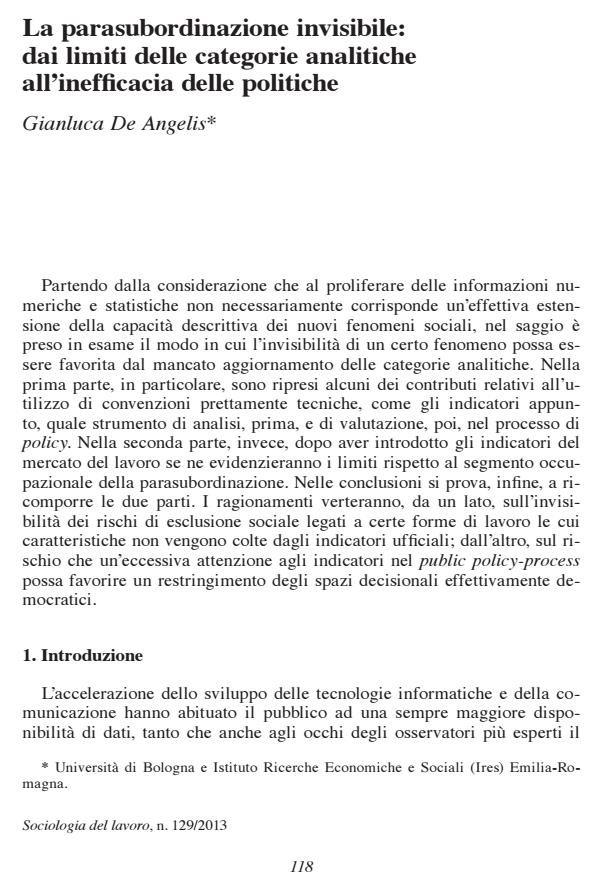The invisible para-subordination: from the limits of the analytical categories to the ineffectiveness of policies
Journal title SOCIOLOGIA DEL LAVORO
Author/s Gianluca De Angelis
Publishing Year 2013 Issue 2013/129
Language Italian Pages 19 P. 118-136 File size 297 KB
DOI 10.3280/SL2013-129008
DOI is like a bar code for intellectual property: to have more infomation
click here
Below, you can see the article first page
If you want to buy this article in PDF format, you can do it, following the instructions to buy download credits

FrancoAngeli is member of Publishers International Linking Association, Inc (PILA), a not-for-profit association which run the CrossRef service enabling links to and from online scholarly content.
The aim of this paper is to analyze the descriptiveness of official labour market indicators in front of the increase of employment contracts in Italy. In fact, new work conditions, like para-subordination, could be considered invisible for old analytical categories and for those who uses them in the policy process. The first part of this paper summarizes some of literature contributions about the relationship between the "technique" of the labour market indicators and the political conventions supported by those indicators. In the second part, based on the Italian Labour Force Survey data, tries to evidence the limits of key indicators on describing the segment of para-subordinate work. With the conclusive reflections the two parts will be rejoined. In fact, while on the one hand the labour market indicators fail describe the new work conditions, on the other hand an excessive attention to this indicators in the public policy process, will characterize the policies by the same weakness of main indicators, reducing the democracy in the decision making process.
Keywords: Para-subordinate work, techniques of the labour market indicators, political conventions, democracy
- Il lavoro gratuito in rete: tra paradossi del dono e del riconoscimento Anna Cossetta, Sergio Labate, in SOCIOLOGIA DEL LAVORO 133/2014 pp.196
DOI: 10.3280/SL2014-133014
Gianluca De Angelis, La parasubordinazione invisibile: dai limiti delle categorie analitiche all’inefficacia delle politiche in "SOCIOLOGIA DEL LAVORO " 129/2013, pp 118-136, DOI: 10.3280/SL2013-129008